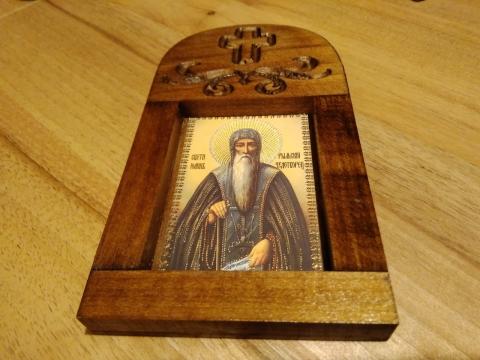Icons

A friend recently returned from Bulgaria bearing a gift. It’s a wooden frame inside which is an icon. Icons are Greek or Russian Orthodox depictions of saints and other religious figures and are the East’s answer to Western Catholicism’s love of statuary. Artistically, they’re sometimes pleasant (mine is unusually nice), though saints’ heads are often rather bulbous, their faces expressionless and the necks look like they’ve been broken. Spiritually, they do nothing for me, especially in light of Orthodoxy’s claim that they are portals to the divine. Although it teaches that such images must not be worshipped, it also says that honour bestowed upon such a picture transfers to the subject; kissing an icon of Christ is tantamount to kissing Christ directly.
If, like me, you feel somewhat awkward in the company of icons, so did several generations of Orthodox Greeks. The ‘First Iconoclas’ took place between 726 and 787 and the second between 814 and 842 during which such images were destroyed. From having identified icons as the "graven images" of Exodus 20:4 and Deuteronomy 5:8, churches were denuded of their painted saints. These periods were soon forgotten, and Orthodox churches returned to their veneration of clutter.
Will I keep my little icon of Saint Ivan of Rila? Yes, as an historical artefact/piece of artwork. If ever I feel myself drawn to its veneration, it’ll become fuel for the log burner; by it I’ll warm my hands though not my heart. The only icon or image of Christ I seek is the one God is constructing in my heart as He chisels and sculpts.
- Log in to post comments


 Sunday Worship 10.45am & 6.00pm
Sunday Worship 10.45am & 6.00pm